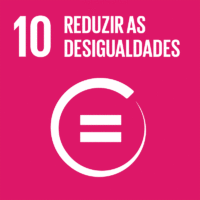Ciência_Iscte
Publicações
Descrição Detalhada da Publicação
Five regions, five retinopathy screening programmes: a systematic review of how Portugal addresses the challenge
Título Revista
BMC Health Services Research
Ano (publicação definitiva)
2021
Língua
Inglês
País
Reino Unido
Mais Informação
Web of Science®
Scopus
Google Scholar
Esta publicação não está indexada no Overton
Abstract/Resumo
Background: The implementation of a population-based screening programme for diabetic retinopathy involves
several challenges, often leading to postponements and setbacks at high human and material costs. Thus, it is of
the utmost importance to promote the sharing of experiences, successes, and difficulties. However, factors such as
the existence of regional programmes, specificities of each country’s health systems, organisational and even
linguistic barriers, make it difficult to create a solid framework that can be used as a basis for future projects.
Methods: Web of Science and PubMed platforms were searched using appropriate key words. The review process
resulted in 423 articles adherent to the search criteria, 28 of which were accepted and analysed. Web sites of all
Portuguese governmental and non-governmental organisations, with a relevant role on the research topic, were
inspected and 75 official documents were retrieved and analysed.
Results: Since 2001, five regional screening programmes were gradually implemented under the guidelines of
Portuguese General Health Department. However, complete population coverage was still not achieved. Among
the main difficulties reported are the complex articulation between different levels of care providers, the low
number of orthoptic technician in the national health system, the high burden that images grading, and treatment
of positive cases represents for hospitals ophthalmology services, and low adherence rates. Yet, the comparison
between strategies adopted in the different regions allowed the identification of potential solutions: hire orthoptic
technician for primary health care units, eliminating the dependence of hospital professionals; use artificial
intelligence algorithms for automatic retinographies grading, avoiding ophthalmologists overload; adoption of
proximity strategies, as the use of portable retinographers, to promote adherence to screening.
Conclusion: Access to diabetic retinopathy screening remains remarkably variable in Portugal and needs urgent
attention. However, several characteristics of effective screening programmes were found in Portuguese screening
programmes, what seems to point toward promising outcomes, especially if each other highlights are considered.
The findings of this research could be very useful for the other countries with similar socio-political characteristics.
Agradecimentos/Acknowledgements
--
Palavras-chave
Diabetic retinopathy,Population-based screening,Portuguese screenings,Systematic review
Classificação Fields of Science and Technology
- Medicina Clínica - Ciências Médicas
- Ciências da Saúde - Ciências Médicas
Registos de financiamentos
| Referência de financiamento | Entidade Financiadora |
|---|---|
| UID/00315/2020 | Fundação para a Ciência e a Tecnologia |
| UIDB/04466/2020 | Fundação para a Ciência e a Tecnologia |
| HOPE Project | Fundação para a Ciência e a Tecnologia |
Contribuições para os Objetivos do Desenvolvimento Sustentável das Nações Unidas
Com o objetivo de aumentar a investigação direcionada para o cumprimento dos Objetivos do Desenvolvimento Sustentável para 2030 das Nações Unidas, é disponibilizada no Ciência_Iscte a possibilidade de associação, quando aplicável, dos artigos científicos aos Objetivos do Desenvolvimento Sustentável. Estes são os Objetivos do Desenvolvimento Sustentável identificados pelo(s) autor(es) para esta publicação. Para uma informação detalhada dos Objetivos do Desenvolvimento Sustentável, clique aqui.

 English
English



